The best mayonnaises you can buy (a nostalgia-proof taste test)

- Share via
In an Instagram post over the summer, I offered up my brand preference for mayonnaise, a seemingly innocent directive while making a simple tomato sandwich. Little did I know that I would receive more unsolicited replies than on any previous post ever. It sparked a heated debate in my DMs about brand preferences and which mayo was the definitive “best.”
I wasn’t even aware of many of the brands brought to my attention, and it made me think, “Why do I like the brand I like? Do I actually know what my favorite is, or do I simply cling to the brand that I grew up with?” That’s always been my general theory for why most people cling to one brand over others. I needed to test that theory.
So in a purely selfish exercise to find out which brand I like the most, nostalgia be damned, I enlisted a colleague — food columnist Lucas Kwan Peterson, an expert in discerning the best quality of any packaged food — to help me taste a large selection of mayonnaises available in the Los Angeles area, making sure to include all the brands commenters deemed their favorites.
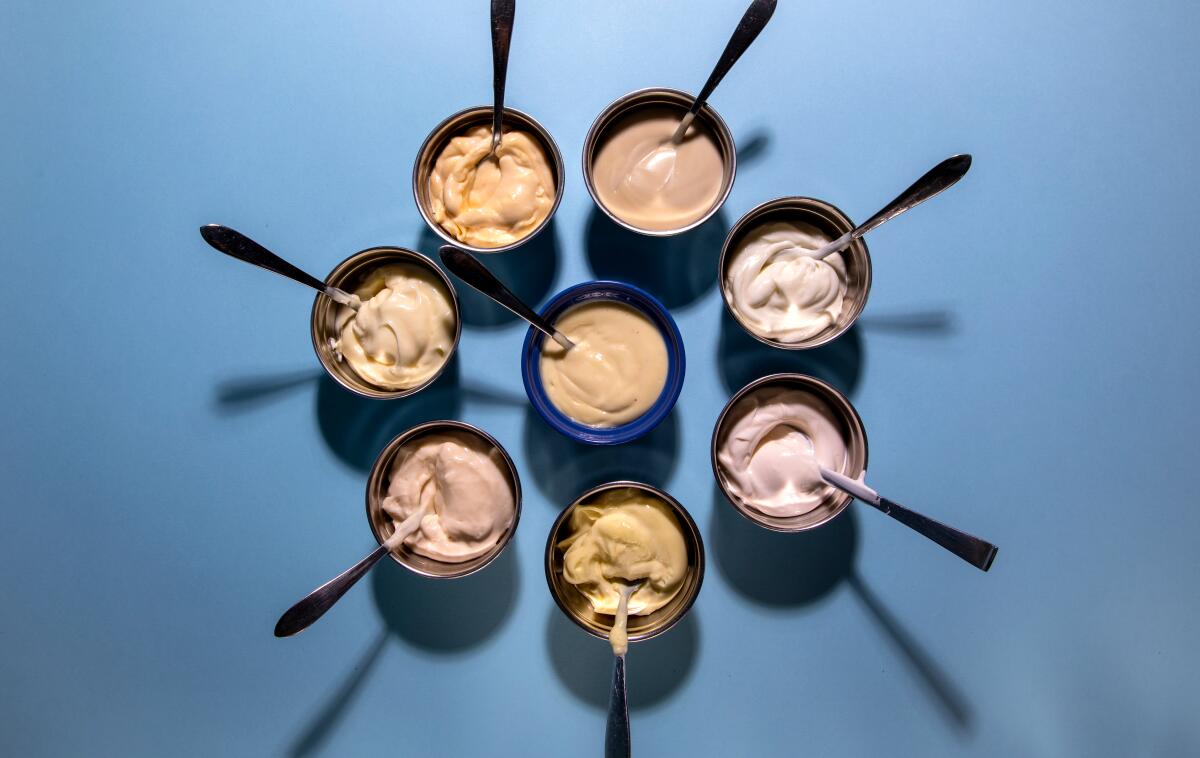
But before we could taste them, we had to consider — as Descartes surely did — what is mayonnaise? Is it just a sandwich lubricant meant to make palatable otherwise dry ingredients that would cause a choking hazard if eaten plain? Is its purpose only to bind potatoes, chopped chicken or other clunky ingredients into a ruggedly cohesive pâté? Or is it an ingredient that stands on its own, with a flavor to be singularly savored like ketchup, best eaten while clinging to the exposed end of a hot french fry? All the hypothesizing seemed too silly.
As for the homemade versus store-bought debate, there’s clearly a reason more people buy it than make it: No one wants to deal with all that whisking (although our recipe for homemade mayonnaise eschews hand-whisking altogether to make that arm pain a thing of the past). So instead of insisting you only ever make your own mayonnaise — advice even I’d balk at — our efforts were best put toward figuring out the best store-bought mayo, one that would enrich your life as much as the homemade stuff.
The taste test was full of delightful surprises, retching disappointments and a curious aroma of ... paint. Here’s what we uncovered:
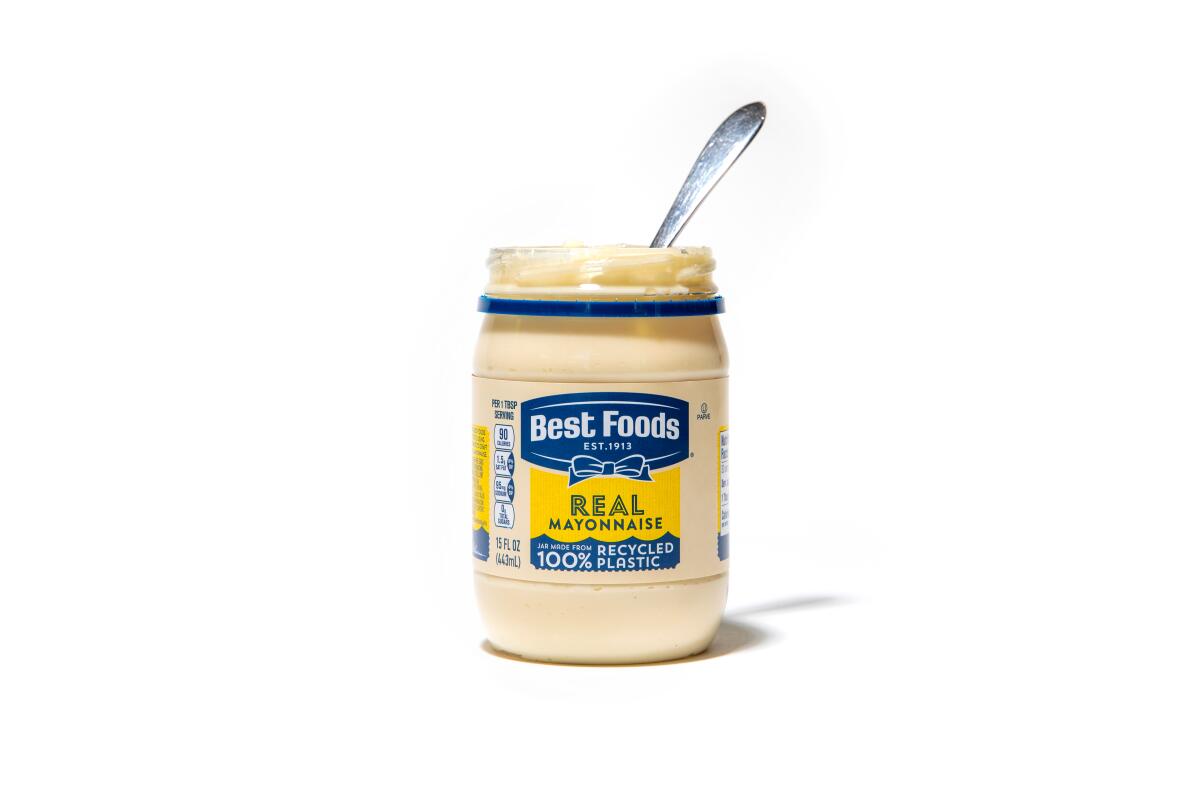
Best Foods: Known as Hellmann’s east of the Rockies, this mayo brand is arguably the most commonly available and the most loved by everyone I polled. When spooned from the jar, it has a fluffy, soft-peak-meringue texture that gives it a light mouthfeel. It tastes like, well, plain mayonnaise. Neither great nor bad, it’s a solid choice for when you need mayo but don’t want its flavor to dominate the dish.
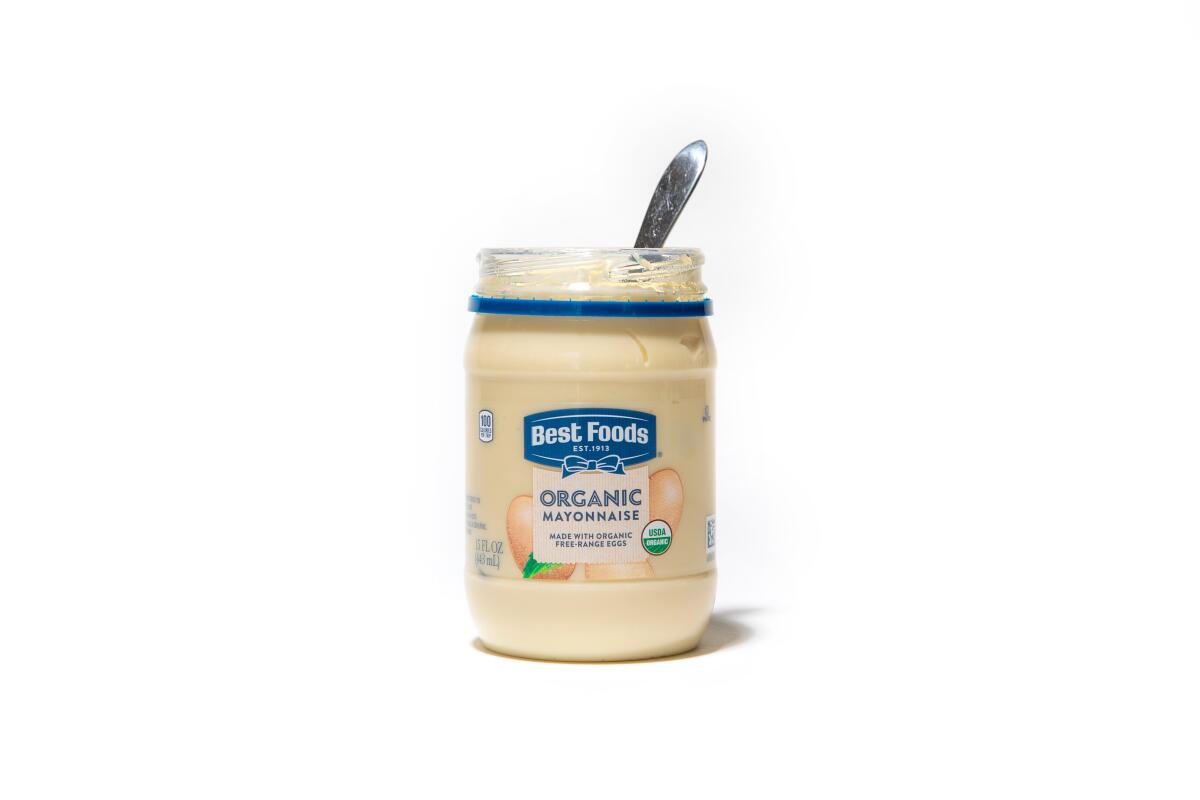
Best Foods Organic: Seemingly made with the same ingredients as its nonorganic counterpart, this version lists organic dried cane syrup as its sweetener instead of the original’s sugar, which might account for its slightly brown sugar-like sweet taste, which turned us off. That and its vaguely grayish color were enough for us to declare that it wasn’t worth the feeling of smug superiority in eating organic for a mayo that might ruin your sandwich or potato salad with such a cryptic flavor.
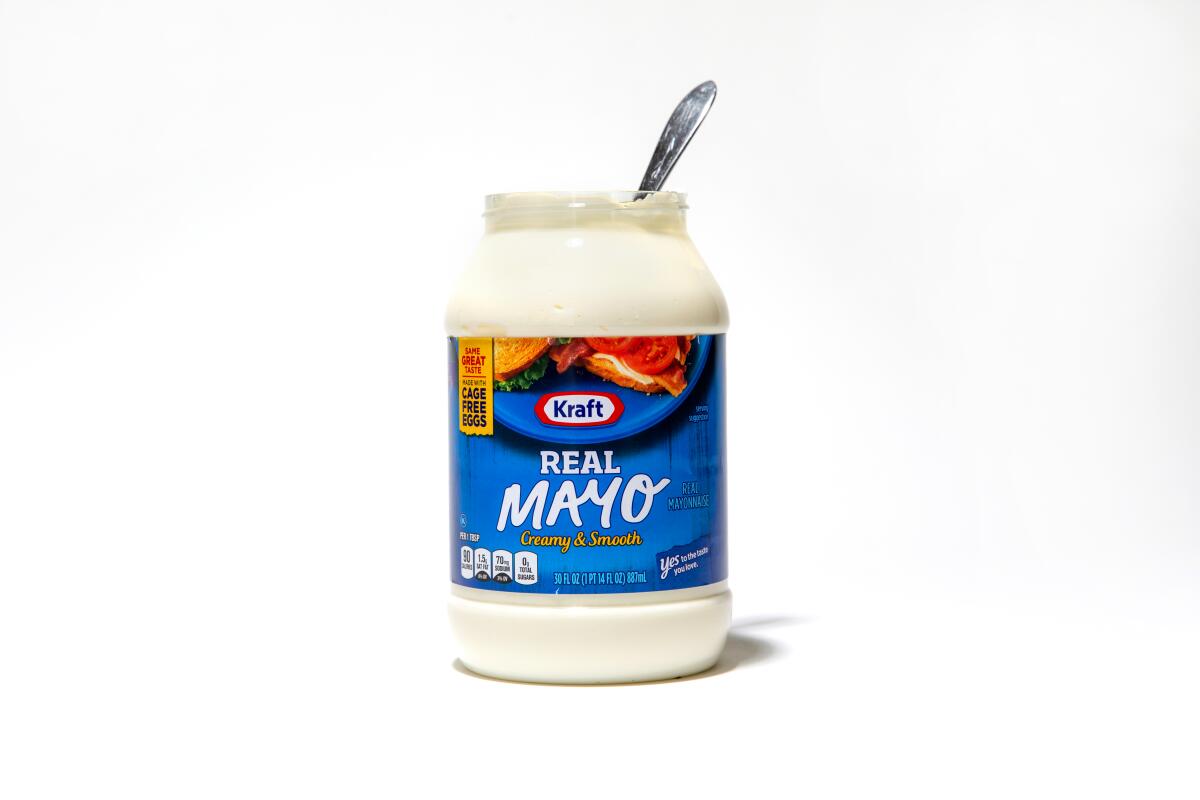
Kraft: Of all the brands brought to my attention, this one was exclusively beloved by other recipe developers I know in the industry and was the one I was most excited to try. Readers, it did not disappoint. While most other mayos have variations on a creamy eggshell-white color, this one is starkly snow-white, and its texture is at once whipped and light and creamy like pudding. It has a distinct flavor — thanks to the garlic and onion in its ingredients — that lends it a light savoriness to balance its richness. If you want a commanding presence and clean, ideal mayo taste, look no further.
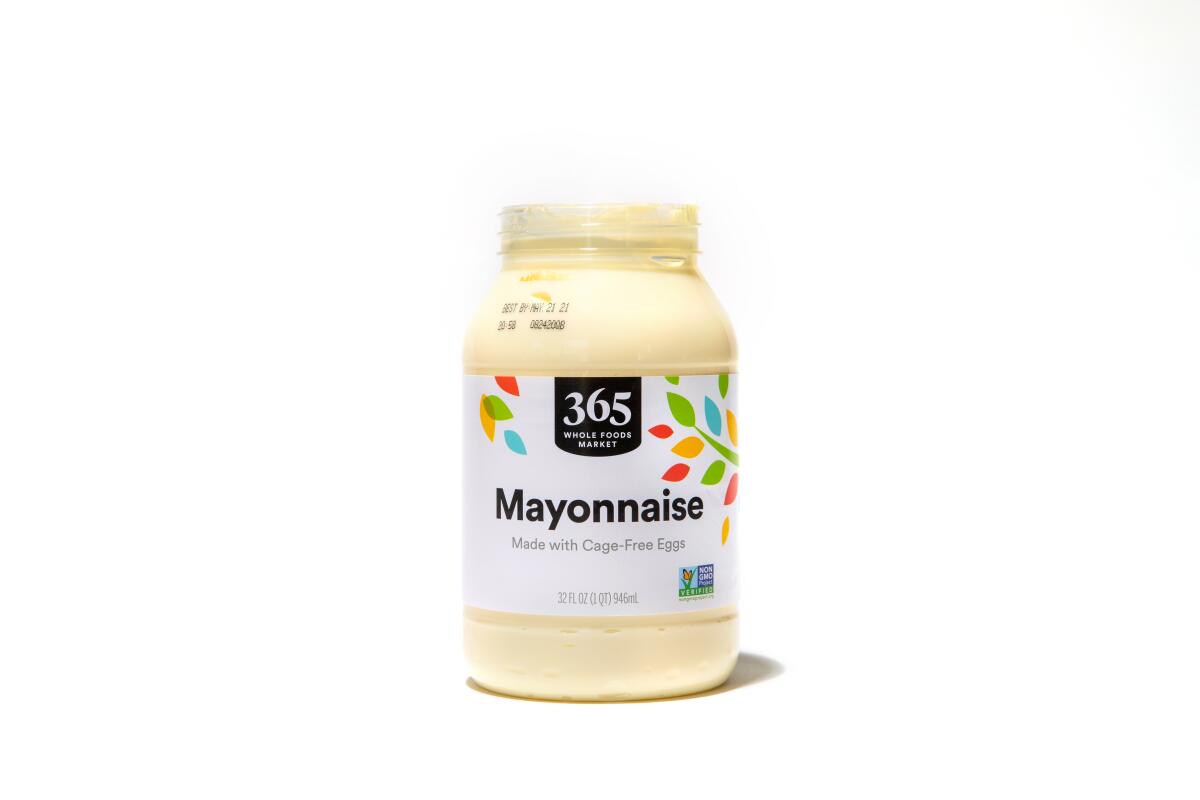
365 Whole Foods Market: Many commenters are brand loyal because the brand is available where they shop the most. If you’re shopping at Whole Foods, you’re most likely buying its 365 brand of mayonnaise. Like Best Foods, it has the neutral taste you think of when you think of mayonnaise, but with a slight tang, thanks to the addition of mustard, a common ingredient in many brands, we later came to realize. If you’re already at Whole Foods and need mayo, you’ll be just fine picking this up.
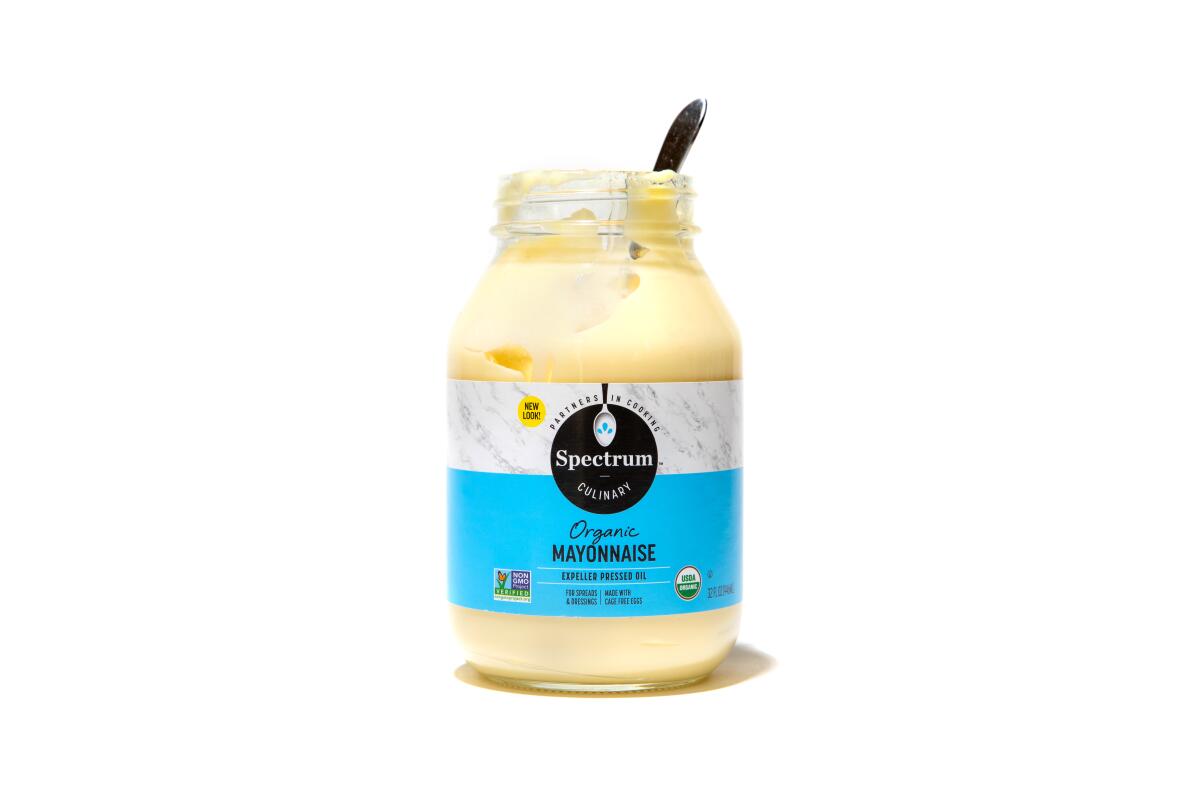
Spectrum Organic: Another brand available at Whole Foods, Spectrum made a name for itself — at least as far as I’ve seen — with its organic coconut oil, organic vegetable shortening and other “alternative” cooking fats. The mayo, however, possesses a gold-gray color and a flan-like texture that is, indeed, alternative to the rest of the mayos. And because it uses honey instead of sugar as a sweetener, that flavor is very dominant, a con for those who don’t like honey (*raises hand*). We also noticed a curious aftertaste of what can be described only as ... paint fumes. (I later read that soybean oil, the base of Spectrum’s mayo as well as several other brands, is commonly used as a binder, along with flaxseed oil and tung seed oil, in paints because it repels water and dries quickly, a factor that may influence why mayo dries to a firm shellac when left exposed to air for too long.) Other brands do a better job of covering up the odd taste that admittedly you might distinguish only if tasting numerous mayos side by side.
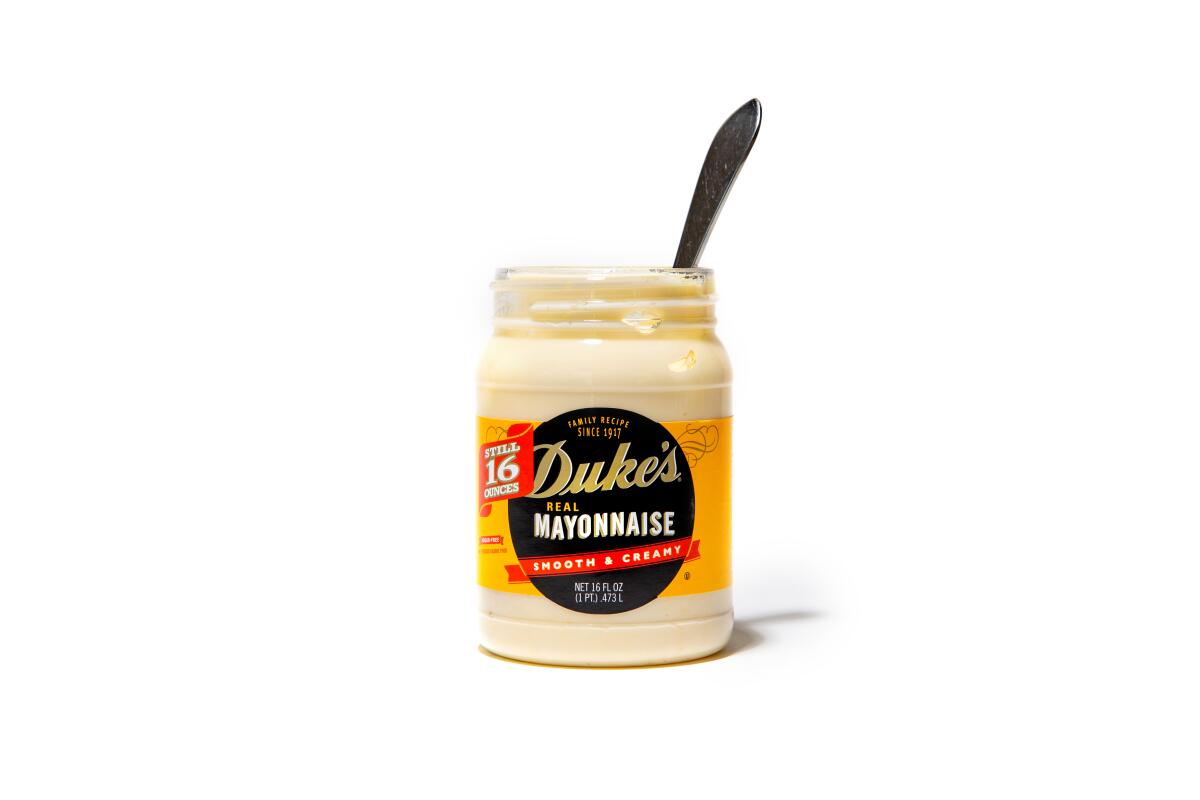
Duke’s: Though not available on the West Coast, we included it because of all the brands, it has the most fervent fan base. As someone raised in the South, I remember that people who liked it spoke of it with religious zeal. With its proud sugar-free banner on its label, Duke’s is slightly tangy, thanks to the use of distilled and cider vinegars, and it has the faintest floral chile aroma from paprika extract. It was also the creamiest of the mayos we sampled. While Kraft was still our favorite, Duke’s is a close second. I see now that the vehemence was warranted.
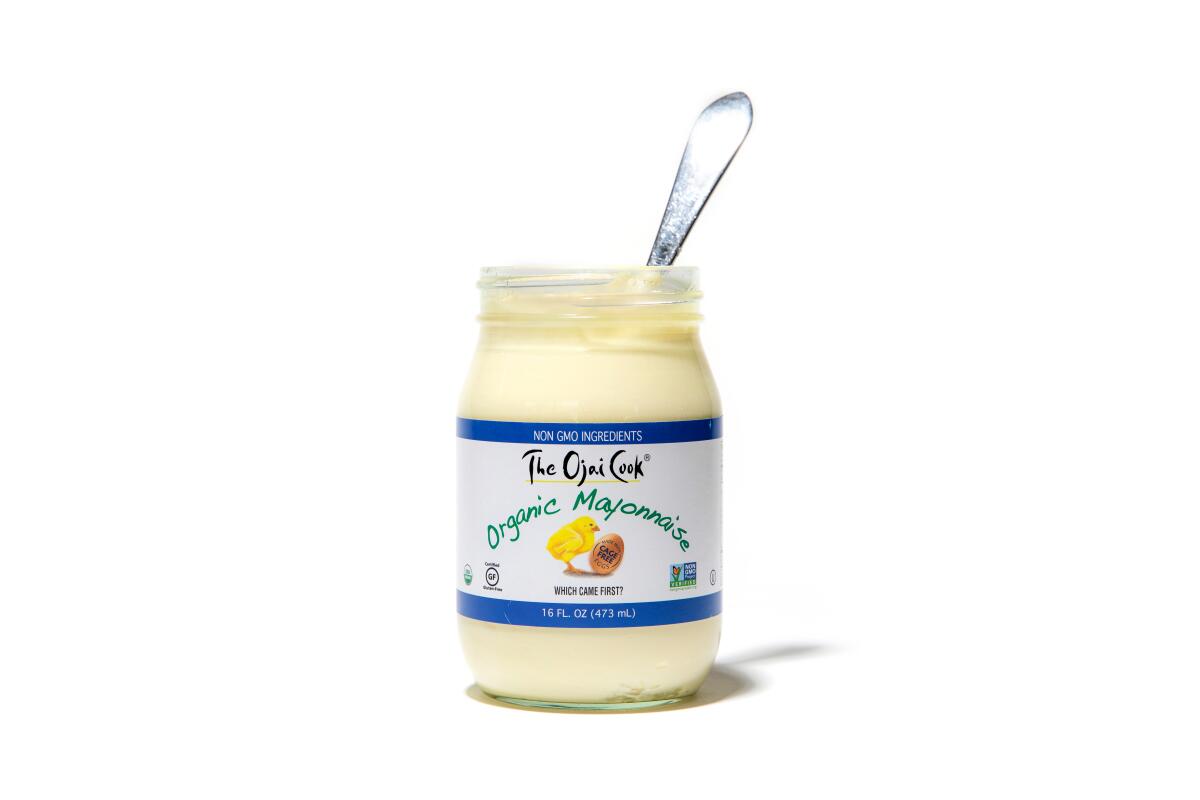
The Ojai Cook: Despite its name, this mayonnaise is produced in Irwindale, east of L.A., and it is the best of the locally made varieties. Touting its use of non-GMO ingredients and cage-free eggs, Ojai Cook is another unsweetened mayo with a distinct tang from the addition of mustard. While it also possesses the tell-tale aftertaste of soybean oil, it was not as noticeable as in other brands and is better balanced by its richer, eggier flavor. If you eat only organic, this is the best mayo you can get.
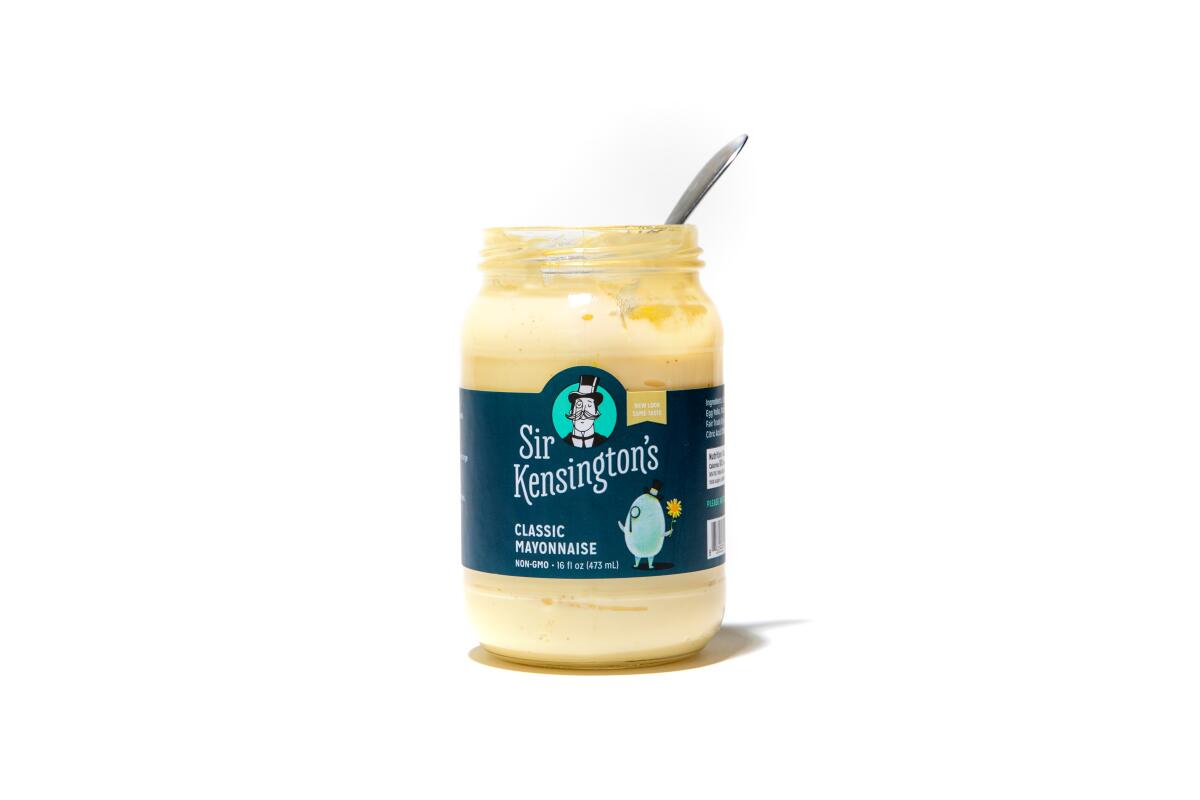
Sir Kensington’s: This 10-year-old brand made a name for itself by offering the best-to-date alternative to classic corn-syrup-based ketchups sold by bigger brands. And while the brand is probably best known for that ketchup and its chipotle-flavored and vegan mayonnaises, its classic, plain mayo stands on its own thanks to a pleasing texture (dense but creamy) and appetizing color (light eggy-yellow) that lends it a distinct homemade quality, accentuated by noticeable specks of black pepper. If you’re looking for a mayo that feels homemade — and spares you all that whisking — this is the one for you.
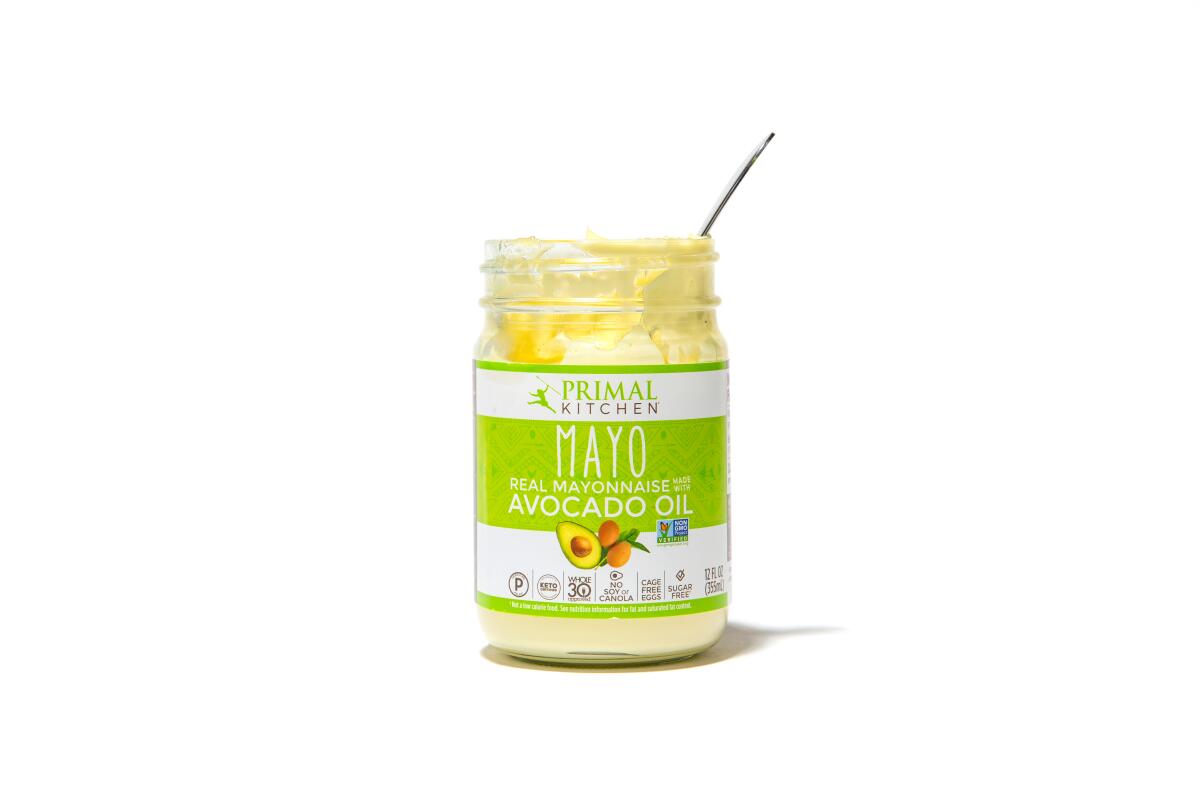
Primal Kitchen: The label of this Oxnard-based brand says: Certified Paleo, Keto certified, Whole 30 approved, no soy or canola, cage free eggs, sugar free. A seeming one-stop-shop mayo for all your dietary needs, and we had high hopes for it. While it was refreshingly devoid of the aftertaste of soybean oil — thanks to its use of avocado oil, which also lends it a not-unappetizing green color — the inexplicable addition of rosemary extract gives it an odd limeade smack. “It tastes like the fake lime flavor in a Diet Coke with lime soda,” said Lucas — a quirk that completely overpowers the other ingredients. I suppose if you need mayo for a potato salad or chicken salad that uses chopped rosemary or lime zest as an ingredient, this peculiar quality would be a boon, but not as a plain mayo on its own.
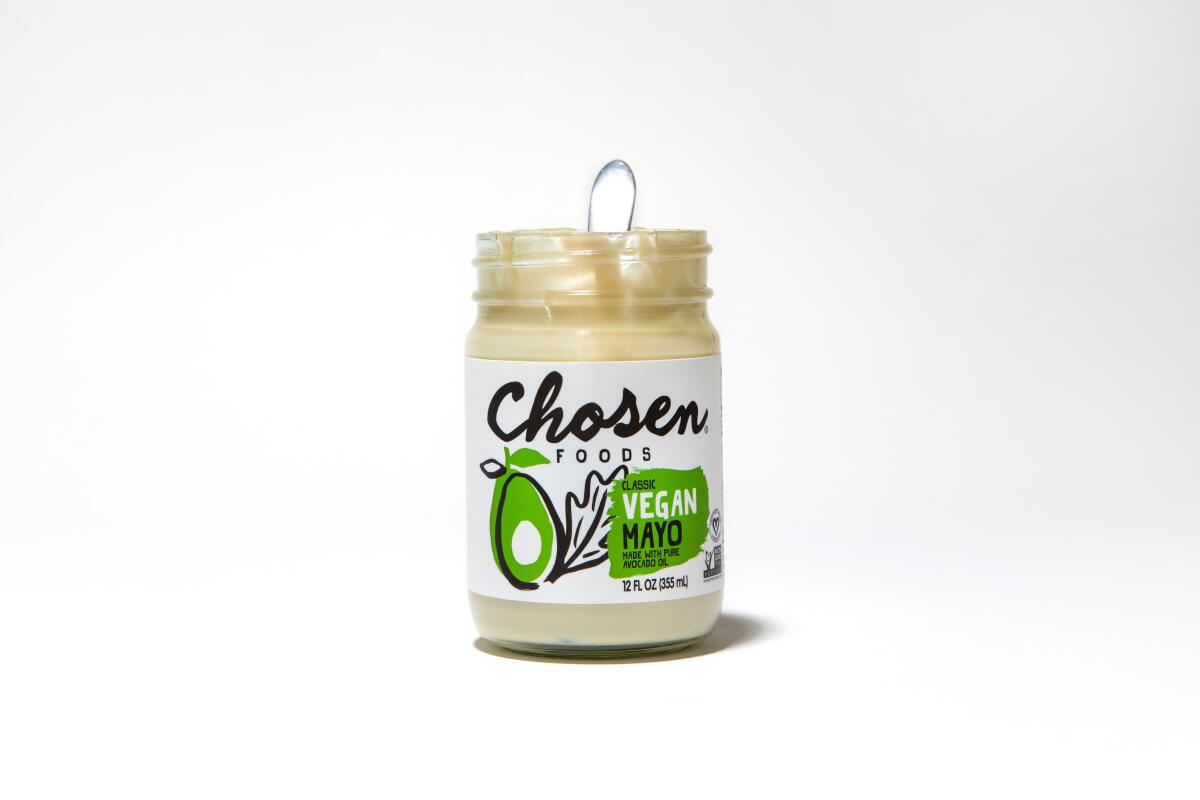
Chosen Foods: With a cute, illustrated label and claims of being made with no soybean oil, I had high hopes for this vegan mayonnaise, manufactured in Canada but distributed out of San Diego. And while we were expecting a more earthy flavor than regular mayonnaises (the brand is made with aquafaba — a.k.a. cooked chickpea juice — and fava bean powder), we were not expecting such a runny texture. It’s thickened with four different natural gums and emulsifiers, but we were surprised at how loose this mayo was, how easily it poured from the jar. Its off-putting dark gray color, mixed with that peculiar flavor from the use of the aforementioned rosemary extract, made it even less desirable. While I thought vegans deserve a better option, Lucas said, “I’d eat this if I was vegan.”
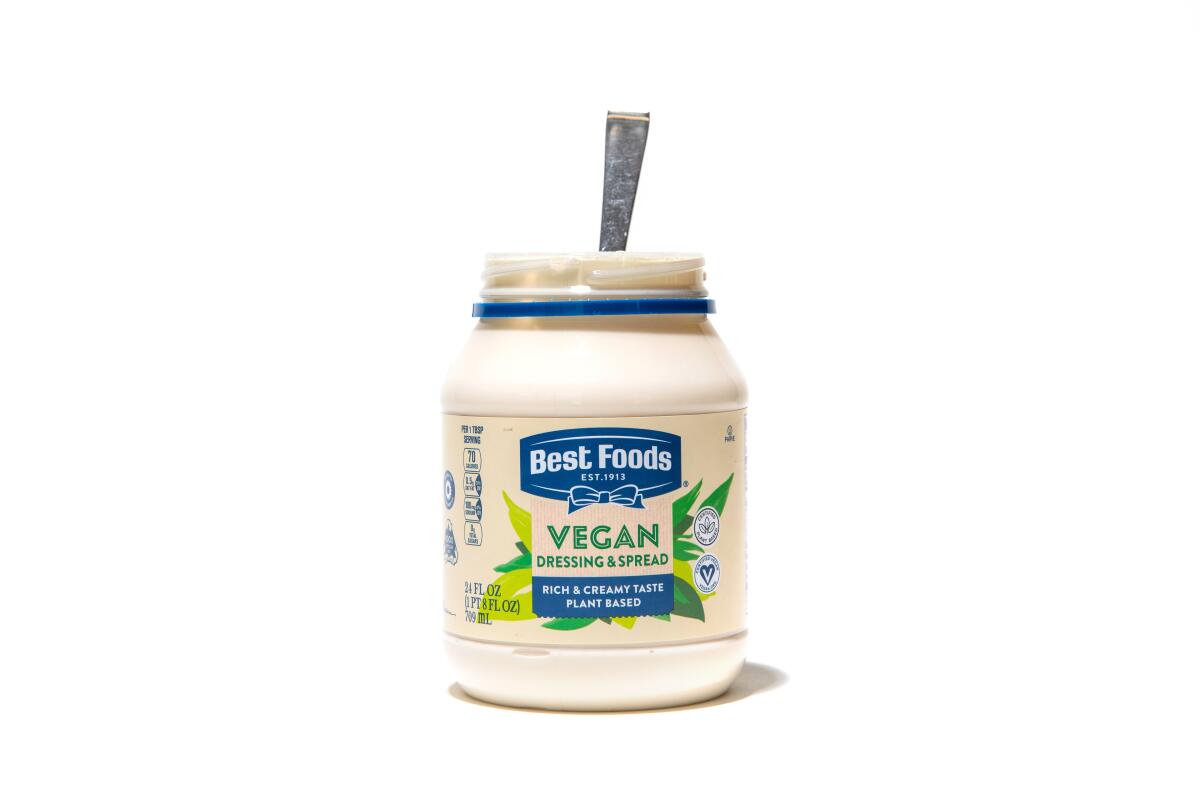
Best Foods Vegan: At the opposite end of the spectrum from Chosen Foods’s gray aquafaba-based vegan mayo, Best Foods’ version is made with all the classic ingredients minus the eggs. In their place are modified potato and corn starches, which thicken the mayonnaise so it has the expected fluffy/creamy texture. And while it has a mysterious blue tint, it tastes and smells the most similar to the brand’s original egg-based version. This sparked a debate between Lucas and me on whether, if you’re a vegan, you want the vegan iteration of a food to mimic the original or taste like its ingredients. Because I am of the former group, I preferred this Matrix simulation over the idiosyncratic likes of Chosen Foods.
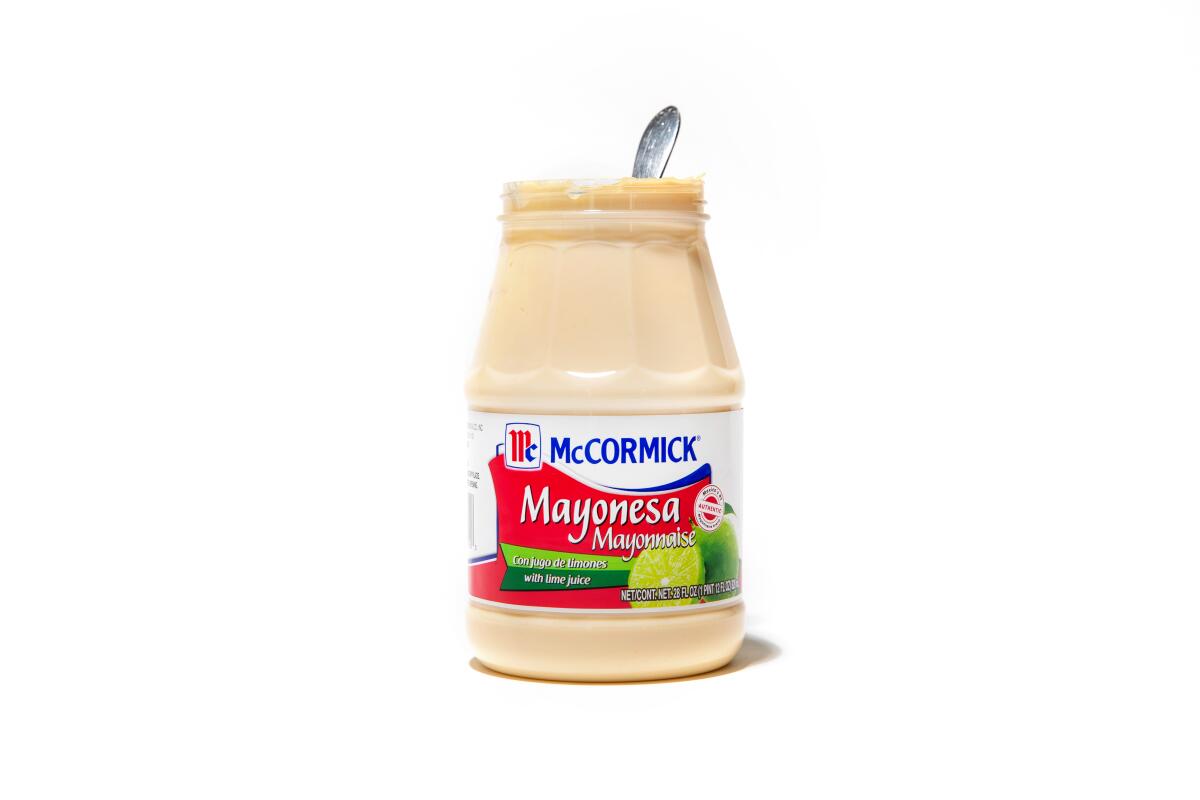
McCormick Mayonesa con jugo de limones: This mayo, sold in delightfully distinct packaging, is another recommendation from mostly L.A.-based food colleagues. And although it’s flavored with lime, paprika and the enigmatic “spices” and has a comparatively pink/orange color, it tastes surprisingly plain, almost exactly like Best Foods’ original mayo. This makes it a great mayo to use when you want a neutral presence. And because of its thicker consistency and because it’s made in Mexico, I am told that it’s a favorite choice for making elote, its thickness helping the other ingredients stick to the ear of corn. A sucker for a good story, I’ll be using McCormick expressly for that purpose in the future.
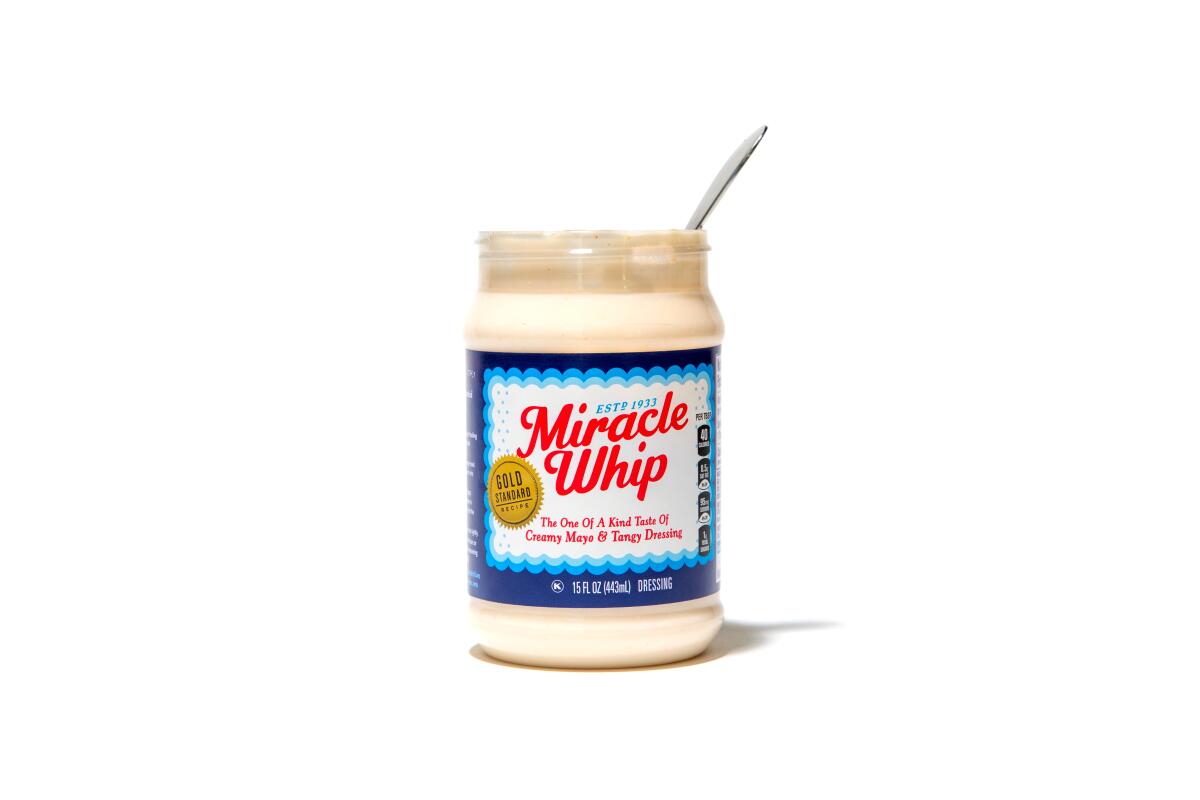
Miracle Whip: I have a confession: Before this taste test, I had actually never eaten Miracle Whip, too scared off by horror stories of the flavor by friends and family. Supposedly, it was developed during the Depression to stretch mayonnaise — made with pricey industrially produced refined oils — with the relatively cheaper salad dressing, made with no oil. Also known as boiled dressing or salad cream, these dressings were egg-thickened emulsions of vinegar and water flavored with sugar and spices and enriched with small amounts of dairy. Today’s Miracle Whip, technically not a traditional mayonnaise, still has a high proportion of sugar — in this case, high-fructose corn syrup — which is the third ingredient listed after water and soybean oil.
Lucas and I were put off by its alarmingly sweet flavor — it reminded me of a tartar sauce made with mayo and sweet pickle relish, which is, in my humble opinion, one of the worst condiments ever made (sorry, Chicago). But while I can’t abide that amount of sweetness in a sauce meant to be used like mayonnaise, other true mayo brands we tried tasted much worse.
In the end, I appreciated the taste test as an exercise in broadening my horizons and judging things for simply what they are. As we grow older, our tastes change; apparently, my taste in mayo has too. No longer tied to nostalgia, I now have new favorite brands I’m excited to use in my cooking. And when the joy of eating is all that keeps a lot of us going in a time like this, the question of a condiment’s role in our daily life may not seem so silly after all.
More to Read
Eat your way across L.A.
Get our weekly Tasting Notes newsletter for reviews, news and more.
You may occasionally receive promotional content from the Los Angeles Times.











